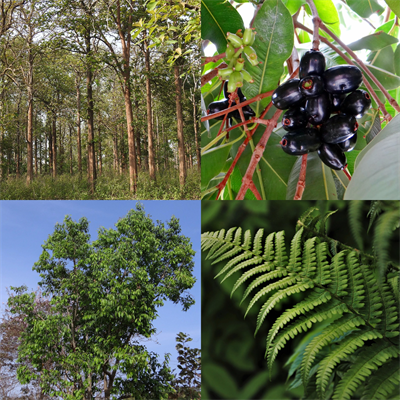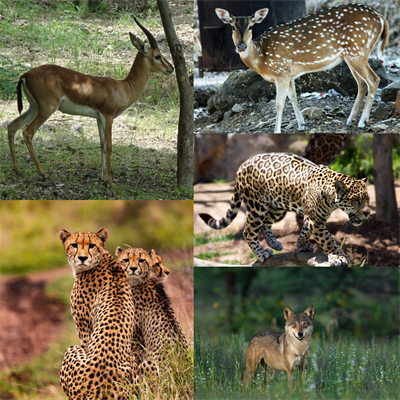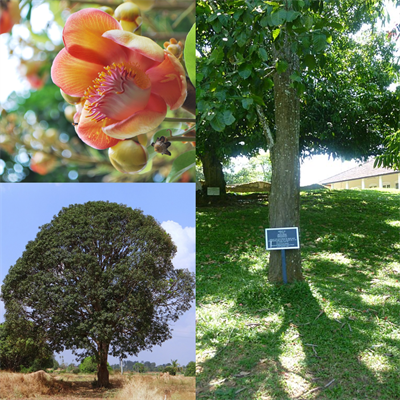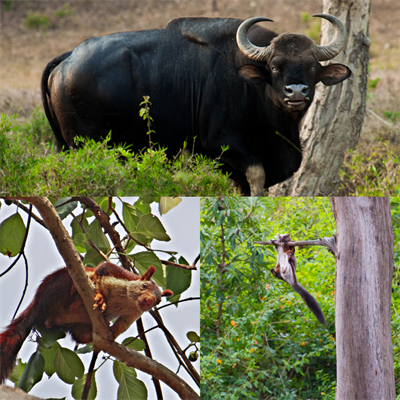PDF chapter test TRY NOW
Adverse effects of deforestation include destroying the plants and animal's natural habitat, make them inhabit the forest. Deforestation poses a serious threat to wild animals and wild plants survival and the natural habitat.
Thus, conservation of forests and wildlife is important to preserve biodiversity, prevent endangered species from becoming extinct, and maintain ecological balance.
Methods for the forest conservation:
- Excessive unauthorized cutting down of trees for timber and fuel must be stopped since the depletion of forests destroys the habitat for wild animals, plants and nature.
- For every acre of cut down, an equal area must be planted with a sapling of trees.
- Natural habitat must be preserved by setting up conservation areas - wildlife sanctuaries, biosphere reserves, and national parks where flora and fauna are protected from extinction.
- Ban to be imposed on poaching (capture of wild animals and birds).
Protected areas for conservation established by the government:
- Wildlife sanctuary - Area wherein wild animals are protected from disturbances.
- National park - Reserved areas for wildlife where they use habitats and resources freely.
- Biosphere reserves - Large protected areas for conservation of wildlife, plants and habitat.
Biosphere reserves:
- Area for the conservation of wildlife, biodiversity, and the tribes inhabiting the area.
- The local tribal people also are part of the biosphere reserves.
- Conservation of ecosystem, species, and genes takes place.
- The area is set up for economic development.
- The exploitation of natural resources for commercial purposes is not allowed.
- Biosphere reserves provide an opportunity for scientific research, tourism, and environmental education.
In India, there are 18biosphere reserves. Some of the biosphere reserves present are includes:
- Nilgiri biosphere reserve - Tamilnadu
- Nokrek biosphere reserve - Meghalaya
- Nanda devi biosphere reserve - Uttarakhand
- Great Nicobar biosphere reserve - Andaman and Nicobar Islands
- Gulf of Mannar - Tamilnadu
- Sunderbans - West Bengal
- Pachmarhi - Madhya Pradesh

Biosphere Reserves in India
Important!
The Pachmarhi biosphere reserve has the Satpura National park, and two wildlife sanctuaries - Bori and Pachmarhi Sanctuary.
Flora and fauna of the Pachmarhi Biosphere:
- The plants that grow in a particular area is called the flora of the area.
- The animals that are present in a particular area is called the fauna of the area.
Example:
The flora present in the Pachmarhi biosphere reserve includes teak, jamun, Sal, Arjun, and Silver fern.

Clockwise from top: Teak, Jamun, Fern, Arjun tree
Example:
The fauna of the reserve includes chinkara, blue bull, cheetah, barking deer, leopard, wolf etc.

Clockwise from top: Chinkara, Indian deer, Leopard, Indian wolf, Cheetah
Endemic species:
Species of the plants and animals that are unique and exclusively found in a particular area are called endemic species.
The species are not present in other areas naturally. A particular species can be endemic to a zone, state or country.
Example:
Sal and wild mango are endemic flora of the Pachmarhi biosphere reserve.

Clockwise from top: Sal flower, Sal tree, Wild mango tree
Example:
The giant squirrel, bison, and the flying squirrel are the endemic fauna.

Clockwise from top: Wild bison, Giant flying squirrel, Giant tree squirrel
Factors that cause the extinction of endemic species:
- Destruction of forests - deforestation
- Introduction of new species
- Human interference due to increasing population in the vicinity of the forests that cause loss of habitat
- Environmental pollution
- Poaching and hunting animals
A species is a group of the same kind of organism which can interbreed to produce fertile offspring.
The members of a species produce fertile offspring only with the members of their own and not with members of other species. Members of a species have common characteristics.
Important!
Nearly 6,00,000 animal species and 4,00,000 plant species are present in the world.
Reference:
https://i0.hippopx.com/photos/92/360/914/blackberry-jamun-syzygium-cumini-fruits-6108537c09ed5ede870e3c6406f370d8.jpg
https://upload.wikimedia.org/wikipedia/commons/thumb/0/0e/Teak_plantation_in_Karnataka.jpg/1024px-Teak_plantation_in_Karnataka.jpg
https://commons.wikimedia.org/wiki/File:Biosphere_Reserves_in_India.png
https://upload.wikimedia.org/wikipedia/commons/thumb/0/0d/Indian_Wolf.jpg/1024px-Indian_Wolf.jpg
https://upload.wikimedia.org/wikipedia/commons/thumb/2/2b/Sal_Tree_%28Shorea_Robusta-Dipterocarpaceae%29.JPG/1024px-Sal_Tree_%28Shorea_Robusta-Dipterocarpaceae%29.JPG
https://www.flickr.com/photos/tariquesani/5296055286
https://upload.wikimedia.org/wikipedia/commons/thumb/5/57/Indian_Bison_%28Gaur%29_3_by_N._A._Naseer.jpg/1024px-Indian_Bison_%28Gaur%29_3_by_N._A._Naseer.jpg
